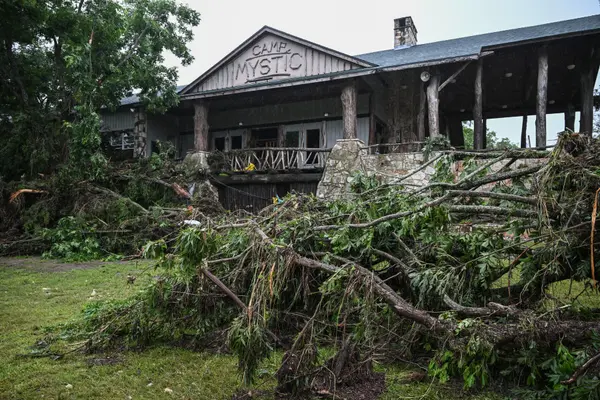
To listen to today’s reflection as a podcast, click here
Religious pat answers simply won’t do.
The questions are edgy and demanding: Where was God when the waters of the Guadalupe River were rising more than 30 feet in a span of 90 minutes early last Friday morning?
If God is really there, how can he bear the loss of more than 100 people, along with the life-altering sadness that now shrouds their families?
As we look at the pictures of the little girls who were attending Camp Mystic – those whose bodies have been found and those who are still missing – how is it possible that God chose not to answer their desperate prayers?
When things go wrong and life falls apart, it’s not unusual for people to want to fire God.
We could do it as simply as axing an incompetent personal assistant. Is this any way to run a universe? Or we can go to social media and un-friend God – to remind him that his performance is utterly unacceptable.
Does God have anything to say for himself?
On the pages of Scripture we find stories that help us begin to take in a larger picture.
One of them is Daniel 3:1-30, where life comes crashing down on the heads of three young men. Their names are Shadrach, Meshach, and Abednego. They’re forced to make a choice: bow before the egomaniacal king of Babylon instead of God, or be thrown into a fiery furnace – an ordeal which they cannot possibly survive.
Shadrach, Meshach, and Abednego reaffirm their trust in God, knowing it’s a death sentence. Into the furnace they go.
But then something happens. To the shock of everyone, the furnace doesn’t kill them. The king himself can see them walking around inside.
And then he sees something else: There’s a fourth person, whom the king describes as “a son of the gods,” walking alongside them. They ultimately emerge unscathed.
In a world that is ravaged by mass shootings, wars, cancers, and flash floods, all of us go into the furnace from time to time.
As author and pastor Tim Keller points out, most of us then want to pick one of three options. We’d like to run around the furnace – to avoid it, if at all possible. Or maybe we can just race right through it – to deny how dreadful it is. Or maybe we should just lie down in the middle of the pain, and give in to despair. Yet none of these options is realistic or hopeful.
So what can we learn from God’s Word that brings us hope?
We discover that God is in the middle of everything, even when he can’t be seen: “When you pass through the waters, I will be with you; and when you pass through the rivers, they will not sweep over you. When you walk through the fire, you will not be burned; the flames will not set you ablaze” (Isaiah 43:2).
Scripture reminds us that we live in a broken world.
There’s no getting around that. We are daily faced with broken bodies, broken psyches, broken promises, broken relationships, and broken dreams.
But this world is not broken beyond repair.
So, where was God last Friday morning? God was with everyone on the banks of the Guadalupe River. This morning he weeps with their families. And he weeps with us.
But how can God bear all this?
At the center of the Christian story we find this strange mystery: God did bear all this. On the cross. The worst thing that could ever have happened to Jesus – the violence that ended his life – is in fact the best thing that ever happened to a broken world.
Nowhere are we promised supernatural deliverance from every experience of pain.
But God is good, and he is able to make supernatural use of even our worst pains to bring about twists and turns we could never have experienced otherwise.
God is able to transform disasters into hopeful events, and even horrendous moral evils into redemptive happenings. God is steering world events – as well as the events in your own life – in such a way that we will all, in the end, be stunned by his wisdom.
What do we do now?
We keep walking, one step at a time.
God directs us in Psalm 23 not to run from trouble, nor to be stopped in our tracks by despair, but to go through the Valley of the Shadow of Death. And that means weeping, hoping, praying, and trusting – putting one foot in front of the other.
And as we walk, we will discover soon enough that we’re never in the furnace alone.
The Son of God is walking with us.
